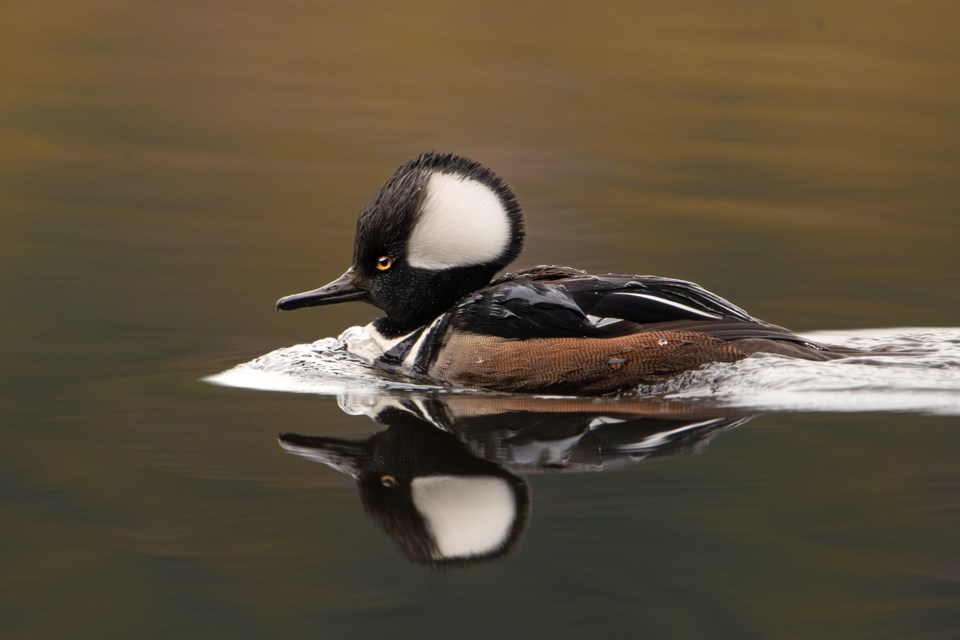On January 1, 47 Bowen Islanders went outside to participate in one of the world’s biggest bird surveys: the Christmas Bird Count (CBC).
It began 124 years ago, when a group of conservationists wanted to promote counting birds instead of shooting them as a Christmas activity. It is now the longest lasting annual citizen science project in North America, and has spread across the Americas to more than 20 countries.
Birders all head out and ID all of the birds they can, then add up their results. But what about double counting a bird? Everyone in a region goes out on the same day (this year on Bowen it was January 1) to avoid this.
For next year, Bowen birder Owen Raybould is working to update the Bowen Island zone maps for even more accuracy. Regions are then subdivided and each group of birders has to sign up to take part (it’s free!)
This year, I was assigned to Killarney Lake. Others took charge of the Meadow, the Cape, the Cove, and many other regions on Bowen, 16 locations in total. I brought my whole extended family out for the event – a chaotic way to bird, but what a fun activity!
At the end of the day, eight of the enthusiastic birders met up at Collins Hall to debrief the day. Wow, do these people ever know a lot about Bowen’s birds! It was super interesting to listen to everyone share how they have noticed trends of birds change over the last 20 years.
Which gets back to why this survey is so important. Many birds migrate away during winter, but some stay. Surveys like this help to monitor which birds are staying longer into the winter, and which aren’t coming here anymore.
An increasingly important problem as the climate continues to change and the effects it has on species can be difficult to monitor. Citizen science bird surveys are frequently cited in academic research, and the bird journal Audubon lists over 300 peer-reviewed articles that use data from the Christmas Bird Count.
Luckily, bird surveying is free and really easy (and fun) to get into. Mobile apps such as eBird, iNaturalist, and Merlin, are extremely helpful for new birders. iNaturalist and Merlin can both help you identify birds, whether it be through photos or sound, and eBird and iNaturalist are great ways to report where you observe the birds.
This survey gets people outside in the cold to go check what birds are still here. This year Bowen birders found 3,385 individuals and identified them into 64 unique species. To do this, 47 people went out and walked a total of 81.5 kilometres.
These are the birds we spotted on Bowen on January 1. How many of them can you find?
Waterfowl: Canada Goose; Mallard; Ringnecked Duck; Greater Scaup; Lesser Scaup; Surf Scoter; White-winged Scoter; Black Scoter; Bufflehead; Common Goldeneye; Barrow’s Goldeneye; Hooded Merganser; Common Merganser; Ruddy Duck
Loons and Grebes: Pacific Loon; Common Loon; Pied-billed Grebe; Horned Grebe
Cormorants: Double-crested Cormorant; Pelagic Cormorant
Wading Birds: Great Blue Heron
Birds of Prey: Bald Eagle; Immature Bald Eagle; Red-tailed Hawk
Shorebirds: Black Oystercatcher; Black Turnstone
Gulls: Bonaparte Gull; Short-billed Gull; California Gull; Glaucous-winged Gull; Iceland Gull
Seabirds: Marbled Murrelet
Owls: Barred Owl
Hummingbirds: Anna’s Hummingbird; Unidentified Hummingbird
Woodpeckers and Allies: Belted Kingfisher; Red-breasted Sapsucker; Downy Woodpecker; Hairy Woodpecker; Northern (Red-Shafted) Flicker; Pileated Woodpecker; Woodpecker spp.
Corvids: Steller’s Jay; American Crow; Common Raven
Chickadees and Nuthatches: Black-capped Chickadee; Chestnut-backed Chickadee; Red-breasted Nuthatch
Small Passerines: Brown Creeper; Pacific Wren (formerly Winter); American Dipper; Golden-crowned Kinglet; Ruby-crowned Kinglet; American Robin; Varied Thrush; European Starling
Sparrows: Spotted Towhee; Fox Sparrow; Song Sparrow; White-crowned Sparrow; Dark-eyed (Oregon) Junco
Finches: Purple Finch; House Finch; Pine Siskin



